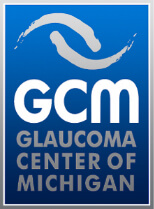Dr. Michael J. Siegel recently authored an article in Ophthalmology 360 discussing the surgical pearls practiced by our physicians at Glaucoma Center of Michigan that make Endocyclophotocoagulation (ECP) laser an ideal option for many of our glaucoma patients undergoing both cataract and glaucoma surgery. ECP was developed in the nineties and is a longstanding and proven minimally invasive glaucoma procedure (MIGS) utilized to help reduce intraocular pressure. ECP involves the shrinking of the ciliary processes under direct visualization with the goal of decreasing the amount of intraocular fluid (aqueous humor) produced within your eye. ECP is performed with cataract surgery after your new lens implant has been placed; a special probe is introduced into the eye through the same cataract incision. This probe has both a special camera as well as fiberoptic cables that deliver the laser energy. Your surgeon will observe the internal structures of your eye on a TV monitor and will direct the laser energy to the ciliary processes under direct visualization. This procedure does not involve opening the conjunctival tissues; this is a major advantage of this procedure as it makes future glaucoma surgery (if needed) a lot simpler with less risk of failure. Since glaucoma usually involves an aqueous humor drainage problem, in more advanced glaucoma, ECP is now sometimes combined with outflow procedures like iStent®, Hydrus® Microstent, goniotomy or viscocanalosotomy in an attempt to avoid more traditional drainage procedures. Read about Dr. Siegel’s pearls for successful ECP here: https://ophthalmology360.com/print-exclusives/6796/
Glaucoma Center of Michigan

Glaucoma Center of Michigan